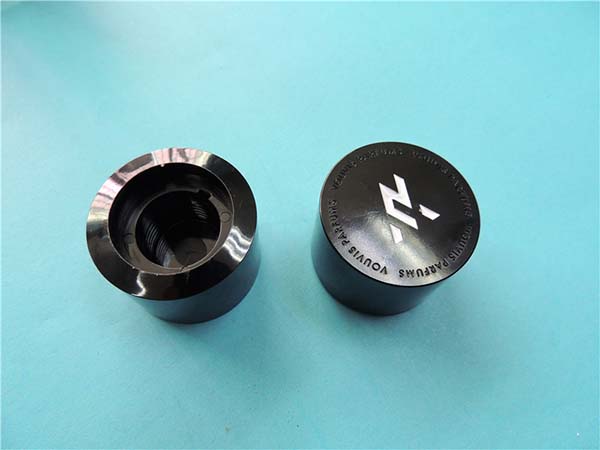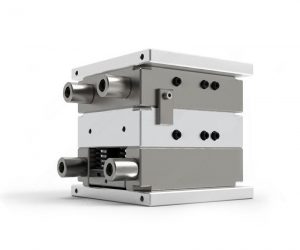Introduction
In the fast - paced and highly competitive business world, prototype product development stands as a cornerstone for the success of new products. It serves as a crucial bridge between the initial concept and the final market - ready product.
For startups, a well - developed prototype can be the key to attracting investors. For instance, many tech startups in Silicon Valley have secured significant funding after presenting a compelling product prototype at pitch events. According to a study by CB Insights, around 70% of funded startups had a working prototype at the time of their initial investment pitch. This tangible demonstration of the product concept gives investors the confidence to put their money into the venture, as it reduces the perceived risk associated with unproven ideas.
For established companies, prototype product development is equally important. It allows them to innovate and stay ahead of the competition. Take Apple as an example. Before the launch of each new iPhone model, Apple invests a great deal of time and resources in prototype development. These prototypes are used to test new features, such as camera technology, battery life improvements, and user interface changes. By doing so, Apple can ensure that the final product meets the high - quality standards expected by its customers and stands out in the highly competitive smartphone market.
Yigu Technology will delve deep into the prototype product development process, exploring its various stages, common challenges faced during development, and effective strategies to overcome these challenges. Whether you are an entrepreneur with a groundbreaking idea, a product manager leading a development team, or an engineer involved in the technical aspects of product creation, the insights shared here will provide valuable guidance to help you navigate the complex but rewarding journey of prototype product development.
The Key Steps of Prototype Product Development
Requirement Gathering and Analysis
The first and foremost step in prototype product development is requirement gathering and analysis. This phase serves as the foundation upon which the entire product is built. By conducting surveys, interviews, and market research, developers can gain a deep understanding of the customers' needs, wants, and pain points. For Yigu Technology example, if developing a new fitness tracking device, surveys can be distributed among fitness enthusiasts to learn about the features they desire most, such as real - time heart rate monitoring, sleep tracking, or calorie - burn analysis. Interviews with personal trainers can also provide valuable insights into the functionality that would be most beneficial in a fitness device for their clients.
Once the requirements are gathered, they need to be carefully analyzed. This involves assessing the feasibility of each requirement. For instance, a requirement for a fitness tracker to accurately measure the body's fat percentage using a non - invasive, wrist - worn device might be technically challenging and costly to implement. Therefore, its feasibility needs to be thoroughly evaluated. Additionally, requirements should be prioritized. Must - have features, such as step counting and activity tracking in the fitness tracker example, should be given the highest priority, while nice - to - have features can be considered later in the development process. According to a study by McKinsey, projects that spend sufficient time on requirement gathering and analysis are 50% more likely to meet their goals and deadlines compared to those that rush through this stage.
Concept Generation and Design
After the requirements are clearly defined, the next step is concept generation. This is where creativity and innovation come into play. Techniques like brainstorming sessions can be held among the development team, involving engineers, designers, and marketers. In a brainstorming session for the fitness tracker, ideas could range from unique design concepts, such as a flexible, wearable band that can change colors based on the user's activity level, to new functionality ideas like integrating a virtual coach feature that provides personalized workout plans.
Researching competitors' products is also a crucial part of concept generation. By analyzing similar fitness trackers on the market, developers can identify gaps in the market that their product can fill. For example, if most existing trackers lack a seamless integration with popular fitness apps, this could be a unique selling point for the new product.
During the design phase, several factors need to be considered. Functionality is paramount. The fitness tracker should accurately perform all the functions it promises, such as tracking different types of exercises like running, cycling, and swimming. User experience is another key factor. The device should be easy to use, with an intuitive interface. A complicated and hard - to - navigate interface can lead to user frustration and ultimately, product failure. Cost is also a significant consideration. The materials and manufacturing processes chosen should be cost - effective without sacrificing quality. For example, using a less expensive yet durable plastic for the device's casing instead of a more expensive metal if it does not impact the product's performance.
Selection of Materials and Manufacturing Processes
The choice of materials and manufacturing processes is directly related to the product's design and requirements. Different materials have different properties, and the right material can enhance the product's performance, durability, and aesthetics. For the fitness tracker, if it needs to be water - resistant, materials like silicone for the band and a waterproof coating for the electronic components would be essential. The cost of materials also plays a role. While high - quality materials may offer better performance, they can also increase the production cost. For example, using a sapphire crystal screen for the fitness tracker may provide excellent scratch - resistance but is much more expensive than a regular tempered glass screen.
Manufacturing processes also vary in terms of cost, complexity, and the quality of the final product. 3D printing, for example, is a popular choice for rapid prototyping as it allows for the quick production of a physical model with complex geometries. It is suitable for creating a first - of - its - kind design for the fitness tracker, where the design may still need to be refined based on testing. Injection molding, on the other hand, is more suitable for large - scale production. Once the design of the fitness tracker is finalized, injection molding can be used to produce the plastic parts of the device in large quantities at a lower cost per unit. Yigu Technology Table 1 below summarizes the advantages and disadvantages of different manufacturing processes:
| Manufacturing Process | Advantages | Disadvantages |
| Impressão 3D | Rapid production, can create complex geometries, low setup cost for small batches | High cost per unit for large - scale production, limited material options in some cases |
| Injeção de moldes | Suitable for high - volume production, consistent quality, wide range of material options | High initial setup cost, tooling required |
| Usinagem CNC | High precision, can work with a variety of materials | Slow production for complex shapes, high cost for small batches |
Building the Prototype
Building the prototype is a collaborative effort that often involves a cross - functional team. This team typically includes mechanical engineers, electrical engineers, software developers, and industrial designers. Each member has a specific role to play. Mechanical engineers are responsible for designing and building the physical structure of the product. In the case of the fitness tracker, they would design the housing, the band, and any moving parts. Electrical engineers focus on the electrical components, such as the circuit board, sensors, and power supply. They ensure that all the electrical elements work together seamlessly. Software developers write the code that powers the device, enabling functions like data tracking, analysis, and communication with other devices. Industrial designers, on the other hand, focus on the product's aesthetics and user - friendliness, ensuring that the fitness tracker looks appealing and is comfortable to wear.
Effective communication and collaboration among team members are essential during this stage. Regular meetings should be held to discuss progress, address any issues, and make adjustments to the prototype as needed. For example, if the software developers find that the sensors designed by the electrical engineers are not providing accurate data, they need to communicate this issue immediately so that the electrical engineers can make the necessary modifications.
Testing and Validation
Once the prototype is built, it undergoes a series of rigorous tests. Functionality testing ensures that all the features of the product work as intended. In the fitness tracker, this would involve testing if the step counter, heart rate monitor, and sleep tracker functions are accurate. Performance testing evaluates how well the product performs under different conditions. For Yigu Technology example, testing the fitness tracker's battery life under continuous use, or its ability to track accurately during high - intensity workouts. User testing is also crucial. By having real users test the fitness tracker, developers can gather feedback on the product's usability, comfort, and any features that may be confusing or missing.
Based on the test results, the prototype may need to be improved. If users find the fitness tracker's interface confusing, the software developers can make changes to simplify it. If the battery life is found to be too short during performance testing, the electrical engineers can work on optimizing the power consumption of the device. According to a report by the Standish Group, over 60% of software projects that skipped or inadequately performed testing and validation faced significant issues during the product's launch, leading to costly rework and damage to the brand's reputation.
Conclusion
Prototype product development is a complex yet rewarding process that requires careful planning, execution, and continuous improvement. From the initial requirement gathering to the final testing and validation, each step plays a crucial role in determining the success of the product.
By understanding the key steps involved, being aware of the common challenges such as technical glitches, budget constraints, and changing requirements, and implementing effective strategies to overcome them, you can increase the likelihood of developing a high - quality prototype. Learning from successful case studies, like the smartwatch and the electric vehicle examples, provides valuable insights into what works in the real - world.
Whether you are on the verge of starting a prototype product development project or are in the midst of one, take the time to reflect on the principles and strategies discussed in Yigu Technology article. Remember, a well - developed prototype is not only a proof of concept but also a powerful tool for attracting investors, gathering user feedback, and ultimately bringing a successful product to market. So, roll up your sleeves, embrace the challenges, and start creating prototypes that can change the game in your industry.

